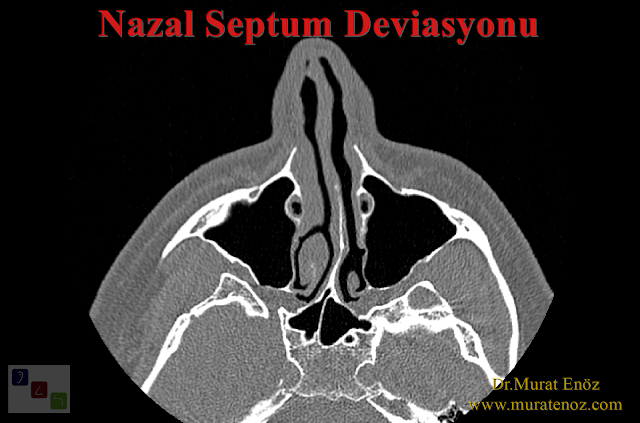Understanding Tomography Indications Before Septoplasty
Septoplasty, a surgical procedure aimed at correcting a deviated septum, is a common solution for individuals experiencing breathing difficulties or nasal obstruction. In preparation for this procedure, tomography, or imaging studies, may be recommended in specific situations to ensure a thorough understanding of the nasal anatomy.
Complex Nasal Anatomy
In cases where patients present with complex nasal anatomy or previous nasal surgeries, tomography becomes essential. Imaging allows surgeons to visualize the intricate structures inside the nose, ensuring a precise understanding of the deviations and abnormalities that may exist.
Assessment of Deviation Severity
Tomography provides a detailed assessment of the severity of nasal septum deviation. This information is crucial for surgeons to plan the surgical approach accurately, addressing specific deviations and ensuring optimal outcomes for patients.
Identification of Concurrent Conditions
Preoperative tomography helps identify concurrent nasal conditions that may coexist with septal deviation, such as nasal polyps or sinus issues. Detecting these conditions allows surgeons to tailor the septoplasty procedure to address multiple concerns simultaneously.
Evaluation of Airway Obstruction:
Tomography aids in the evaluation of airway obstruction, providing insights into the degree of blockage and its impact on breathing. This information is vital for planning the septoplasty to alleviate obstruction and enhance nasal airflow.
In patients who are normally planned to undergo nasal septum deviation correction, routine endoscopic examination performed before surgery, grade of cartilage curvature, and condition of nasal meats are easy to see. However, in the presence of the following conditions, preoperative paranasal sinus tomography is suitable:
• Enlarged middle cone hypertrophy filling the nasal cavity (middle nose growth)
• Nasal polyp presence
• The presence of advanced cartilaginous curvature (especially the presence of anterior septum zone curvature at an advanced level), which complicates or obstructs intranasal examination.
• Presence of chronic sinusitis based on clinical and endoscopic findings (in the above section of the tomography, the right maxillary sinus is completely closed and the soft tissue sinus is completely filled - chronic maxillary sinusitis is seen)
• Enlarged middle cone hypertrophy filling the nasal cavity (middle nose growth)
• Nasal polyp presence
• The presence of advanced cartilaginous curvature (especially the presence of anterior septum zone curvature at an advanced level), which complicates or obstructs intranasal examination.
• Presence of chronic sinusitis based on clinical and endoscopic findings (in the above section of the tomography, the right maxillary sinus is completely closed and the soft tissue sinus is completely filled - chronic maxillary sinusitis is seen)
Customized Treatment Planning:
By utilizing tomography, surgeons can create a personalized and targeted treatment plan based on individual patient anatomy. This ensures that the septoplasty procedure is tailored to address specific issues, leading to more effective and successful outcomes.
Postoperative Considerations:
Tomography helps in foreseeing potential challenges or complications that may arise during or after septoplasty. Surgeons can use this information to develop strategies for mitigating risks and ensuring a smoother postoperative recovery for patients.
Patient Education and Informed Consent:
Providing patients with tomography results enhances their understanding of the surgical process. It allows for informed consent, as patients gain insight into the reasons for imaging and the specific aspects of their nasal anatomy that will be addressed during septoplasty.
Apart from the above, usually private health insurances require a parasal sinus tomography report to document the pre-operative condition (unfortunately, this causes patients to receive unnecessary radiation). Intra-nasal endoscopic examination, nasal valve region tomography can be evaluated more accurately. Tomography is more advantageous than physical examination, especially in assessing septum deviations in the posterior segment.
Given the costs and exposure to radiation associated with CT, preoperative imaging should only be performed for a specific group.
In the realm of septoplasty, tomography plays a pivotal role in enhancing surgical precision and optimizing patient outcomes. By identifying the indications for preoperative imaging, surgeons can tailor their approach, ensuring a thorough understanding of the nasal anatomy and addressing individual patient needs. As technology continues to advance, the integration of tomography in the preoperative phase of septoplasty remains a valuable tool for both surgeons and patients alike.
Below, tomographic images of different sections of a patient with "S" type traumatic septum deviation are shown. Endoscopic examination is difficult because of the deviation in the anterior segment of the septum.
Murat Enoz, MD, Otorhinolaryngology, Head and Neck Surgeon - ENT Doctor in Istanbul
Private Office:
Address: İncirli Cad. No:41, Kat:4 (Dilek Patisserie Building), Postal code: 34147, Bakırköy - İstanbul
Appointment Phone: +90 212 561 00 52
Appointment Phone: +90 212 561 00 52
Fax: +90 212 542 74 47

.jpg)
.jpg)





Comments
Post a Comment